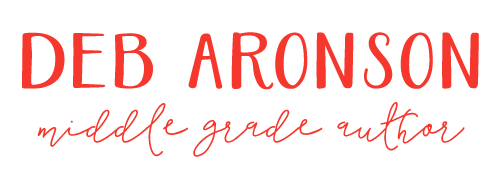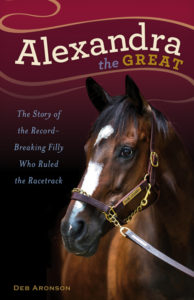Bringing the Creative into Writing Instruction
NCTE Council Chronicle March 2012
What are your options if you feel that your writing instruction is not engaging students at a deep enough level?
Bring in creative writing, say master teachers Judith Michaels and John O’Connor, who encourage teachers to try incorporating poetry, personal writing, and other creative approaches into their writing instruction. Such approaches can help students stretch and grow as writers, they say, and in the process, learn something about themselves and how they view the world. Creative writing can also engage students in ways not always achieved by traditional classroom writing instruction.
What about teachers who would like to try to incorporate creative writing in their classroom, but don’t feel that they are particularly strong creative writers themselves? On some level, Michaels argues, all writing is creative, and thus, we all have some experience and some insights to share.
“You can’t craft even a business memo or a set of instructions without first imagining your audience – creating in your mind a vision of their needs and assumptions; then you must listen, imaginatively, to your voice through their ears as you creatively weigh your words, and tighten and clarify, to persuade or inform those business colleagues,” she writes. Michaels, author of Catching Tigers in Red Weather: Imaginative Writing and Student Choice in High School, and O’Connor, author of This Time it’s Personal: Teaching Academic Writing through Creative Nonfiction, both recent publications of NCTE, teach students of every track and ability level. They argue that all students are capable of doing strong work when presented with compelling writing assignments.
“I really believe that unless we can motivate kids, all the standards in the world won’t do much,” says Michaels, who for the last 37 years has taught at Princeton Day School, [Princeton, New Jersey.] “They have to be engaged. And that happens, not through five-paragraph essays but through their taking ownership of their writing..”
In Catching Tigers she writes, “We know that [students] are more likely to keep coming to school and to thrive there together if, as Katherine Paterson says, we can help them perform their fundamental task as human beings—exercising the imagination in order to seek connection with others.”
O’Connor advocates using creative nonfiction assignments to encourage students to bring their own experiences and interests to bear.
“What was clear early on is how powerfully students write when they write about their personal experiences,” O’Connor says. When he asks students what they care about, , the results are always astounding. “Every time I read a student paper, I learn incredible things about students and their world.”
For an exploratory essay, for example, O’Connor’s students learn to combine research skills with personal writing. In one case, a student was living with a relative with Alzheimer’s. That student wrote an essay about what is known and what is still unknown about the disease and included personal experience, making the essay much more compelling to both writer and reader.
In her school, Michaels is part of a ninth-grade team that has used the theme of the journey, including As part of this theme students read Catcher in the Rye. Michaels then has students narrate an actual class trip they took in the voice of Holden Caulfield.
One student, a young man who strongly preferred action-packed stories and was annoyed by Holden’s digressions and mood shifts, took this assignment very seriously. . He didn’t just parrot Holden’s language; his four-page narrative showed that he took on Holden’s psyche and way of thinking. In his year-end assessment, this student observed that, while he prefers writing whatever he wants, he he was also able to tap his creativity within assignments that require that he stick to a subject or analyze a specific text.
Both Michaels and O’Connor believe that we write to learn what we think, and that to do that we need an authentic audience and a compelling topic. Engaging students in meaningful writing pays off in deeper engagement, more learning, and better performance. In these days of Common Core State Standards (CCSS) and high-stakes testing, this is all good news, they say.
In addition, students benefit from writing in a variety of genres and styles. O’Connor’s students “undertake the same writing challenges faced by many professional writers,” as they write op-eds, memoirs, oral histories of other people, exploratory essays, and even haibun, a genre that combines poetry and prose.
He also makes sure to provide students a myriad of examples for a given assignment, both from professionals and students, “to underscore the importance of individuality.” Teachers can also help students become stronger writers by using class time to do quick writes, to discuss works in progress, and to ask questions and dialogue with student writers.
O’Connor encourages fellow teachers to be open to learn alongside their students, to work on their own writing and show their efforts to their students. By working in this way teachers become more mentors and coaches than judges.
In O’Connor’s classes writing assignments are not graded. There is nothing more discouraging to a student’s writing efforts, he says, than when a teacher responds to a piece of personal writing with a note on the page, “Sorry about your grandmother, C+,” as a colleague of O’Connor’s once drily observed. Instead, he uses a “grids over grades” approach, with only three categories: Strong, OK, and Weak, for each writing skill the students are working on for that assignment.
By not assigning letter grades, he says, students are obligated to read all his comments to understand how they progressed. Those assessments also give him a starting point when grades are due. O’Connor has found surprisingly little resistance to his policy from students or their parents.
Both Michaels and O’Connor share numerous concrete examples of assignments with teachers through their new books. Michaels describes all the assignments that provide scaffolding leading up to a major, end-of-the-fall-semester assignment in which students write “whatever they want” – a project she calls “the tiger.” Both authors also describe class conversations, give anecdotes about students’ successful efforts, and talk about times when their ’ plans backfired or the students struggled. Michaels in particular wanted readers to hear what “a class of student writers sounds like when it catches fire,” and to appreciate the fact that teaching can be messy. Sections subtitled So Far/What Next? give her the opportunity to reflect on and assess what her students have learned and determine the next step(s).
“It was important to me that the authority voice in the book was making dumb mistakes and learning from kids,” says Michaels.
O’Connor hopes teachers realize that there are many ways that the writing activities described in his book can satisfy Core Standards and other requirements. The CCSS , he points out, are guidelines, and tTeachers, as trained professionals, must take the responsibility and use their professional judgment to know their students and their needs and to move them forward.
Michaels agrees. “We are responsible for how we teach the curriculum. We know the kids.”
For Michaels, getting to know her students as quickly as she can is central to her teaching efforts. Building community and learning to trust one another is essential when teaching creativity and imagination, she says. Her book describes several community-building exercises she does with students at the start of the school year.
Relatively late in her process of growing as a teacher, Michaels also began having her students create the criteria to assess their own writing. After the first night they work on a piece of writing, Michaels began asking her students, “what are you finding hard? What do you need help with? What is working well? How do you think these papers should be assessed? What do you think the goals should be?”
‘You’ve got to have a good opening, they would say,’” says Michaels. “And I would ask them, What makes a good opening?”
Michaels found that her students consistently arrived at the same criteria that various professional groups had developed, but “the kids were doing their own thinking on what makes good writing. The goals and criteria were very closely connected in their mind as they wrote. They were their criteria.”
Teaching writing in this way can be daunting and feel a little risky, says Michaels, but when she sees the growth her students make, it is worth it.
O’Connor agrees. “The text most people rely on is numbers,” says O’Connor. “I think of this as the ’Scantron’ version of their lives: you are a B student, a 20 ACT score etc. All that shorthand is really limiting. That misses almost everything we can know, and reduces us to stock characters in folktales. Students need to be aware that they can be the authors of their lives, that they can take control of that story.”
Teachers, too, may sometimes welcome a reminder that they are the authors of their lives. As O’Connor writes in This Time it’s Personal, “We are not accountants filling up a grade book, but teaching artists whose art is the collective work of our classes. Our art is always a work in progress – never ending, unreachable, and utterly worthwhile.”



0 Comments